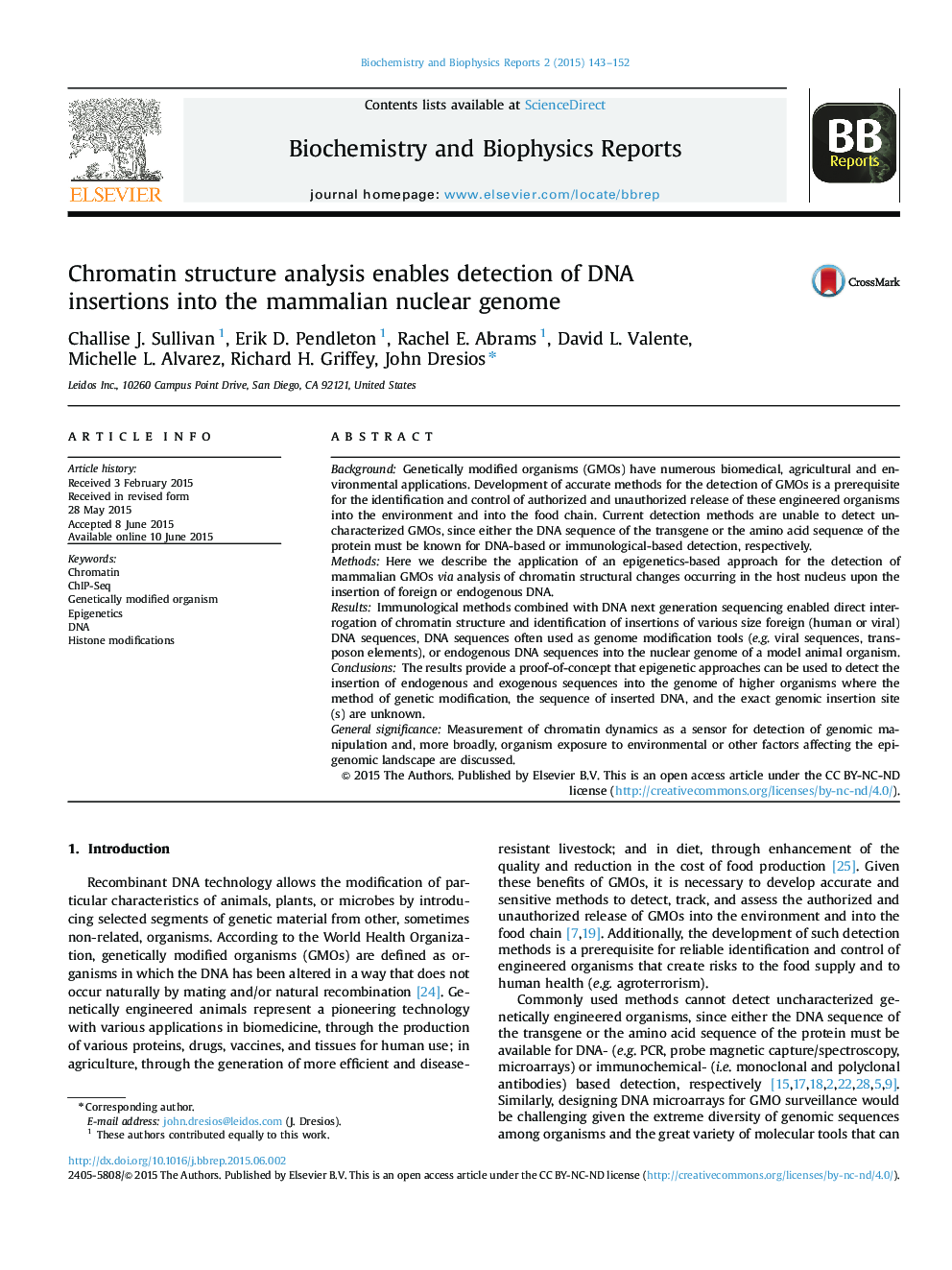| Article ID | Journal | Published Year | Pages | File Type |
|---|---|---|---|---|
| 1941884 | Biochemistry and Biophysics Reports | 2015 | 10 Pages |
•Insertion of DNA sequences into a host genome causes chromatin structure remodeling.•ChIP-seq identifies molecular signatures of DNA insertion into the mammalian genome.•Focus on epigenetic marks limits sequencing data amount required for GMO detection.•Proof-of-concept for use of chromatin dynamics as a sensor of genomic manipulation.
BackgroundGenetically modified organisms (GMOs) have numerous biomedical, agricultural and environmental applications. Development of accurate methods for the detection of GMOs is a prerequisite for the identification and control of authorized and unauthorized release of these engineered organisms into the environment and into the food chain. Current detection methods are unable to detect uncharacterized GMOs, since either the DNA sequence of the transgene or the amino acid sequence of the protein must be known for DNA-based or immunological-based detection, respectively.MethodsHere we describe the application of an epigenetics-based approach for the detection of mammalian GMOs via analysis of chromatin structural changes occurring in the host nucleus upon the insertion of foreign or endogenous DNA.ResultsImmunological methods combined with DNA next generation sequencing enabled direct interrogation of chromatin structure and identification of insertions of various size foreign (human or viral) DNA sequences, DNA sequences often used as genome modification tools (e.g. viral sequences, transposon elements), or endogenous DNA sequences into the nuclear genome of a model animal organism.ConclusionsThe results provide a proof-of-concept that epigenetic approaches can be used to detect the insertion of endogenous and exogenous sequences into the genome of higher organisms where the method of genetic modification, the sequence of inserted DNA, and the exact genomic insertion site(s) are unknown.General significanceMeasurement of chromatin dynamics as a sensor for detection of genomic manipulation and, more broadly, organism exposure to environmental or other factors affecting the epigenomic landscape are discussed.
